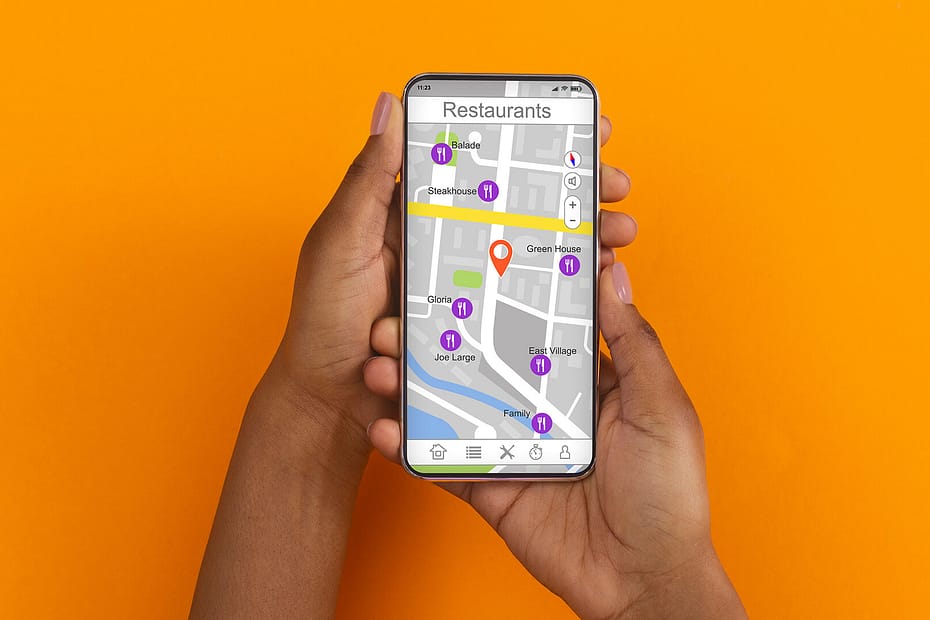Businesses with more than one physical location can face a few challenges when trying to appear in the top positions for local search. In this article, we’ll explore everything you need to know about boosting your online presence for each of your business locations.
Let’s start with some basics.
What is multi-location SEO?
Multi-location SEO is the process of improving your business’s local online organic presence for multiple geographical locations. For example, a home appliance retailer might have over thirty stores dotted around the UK. Improving your online presence for each of those stores helps local people find those stores.

Is multi-location SEO important?
Nearly half of all Google searches are local ones, so if you want potential customers to be able to find your business easily, then it is important to rank highly in them.
We live in a world of convenience, which means local searches tend to have higher intent, as people are further down the sales funnel and more than likely ready to buy. Optimising for local SEO can put you ahead of the competition and ensure that you stand out against them when people are looking for local businesses to buy from.
How to optimise for local SEO?
There are a few ways to optimise for local SEO when your business has more than one location.
Location-based landing pages
The first is to create location-based landing pages on your website for each location you serve. On these pages, you should:
Create case studies
Case studies are another great way to showcase your local business presence. If you have worked locally on a project that went well, use it to create a case study.
Optimise the case study by making sure it contains local keywords, what you did, and how you solved your customer’s problem with your products and services. If you have any testimonials from the person or business you helped, add these as they are a great way to show the trust and reliability of your business.
Make sure to link back to your service and product pages so people can find them easily too.
Utilise your content strategy
Create localised content, such as blog posts, videos, or guides, focusing on trends or issues specific to each area, or highlighting products popular in those localities.
If your business locations are involved in their local communities, sharing this information on your website can be a great way to target local terms and show your presence in the area. You might even get some local links back to your site, which will really help reinforce your local relevance.
Create Google Business Profile listings
Another way to target local search is to create Google Business Profile listings for each location. Creating and verifying a profile for each of your business locations is an excellent tool to help them appear for local search terms, as it will present your business to potential customers and provide them with relevant, important information. For example, for the search ‘furniture stores derby’, the below business profiles appear.

How to ensure you are using Google Business Profile effectively?
Create individual Google Business Profile listings for each location
Create and manage separate business profiles for each physical store. Each profile should contain specific, correct information such as the address, the phone number, the business hours, and details related to the products available at that location.
People can also add reviews to your profile which are great for potential customers to see and help Google see that your business is reliable and trustworthy, which helps your business appear higher in the search results.
Localised keyword strategy
When adding information about your business for each location, include location-specific terms, product variations, and regional preferences. For instance, targeting keywords like “home decor in derby” or “garden supplies near derby” can boost local visibility.

Make sure NAP Information is correct
Google Business Profiles have a thing called NAP information. This stands for name, address, and phone number. Ensuring your NAP information is consistent across all online directories, websites, and listings for each store location will build trust and improve local SEO rankings.
Monitor and respond to local reviews
Encourage customers to leave reviews for each store location. Monitor and respond to reviews, addressing positive feedback and resolving any issues raised in negative reviews.

Track and analyse location-specific metrics
Google Business Profile provides you with analytics on how your listings are performing. Use their analytics tools to track and measure location-specific metrics, such as store-specific website traffic, in-store visits from online sources, and online sales attributed to local searches.
Connect online and offline experiences
If you have a physical store as well as an online one, you can integrate eCommerce functionalities by allowing customers to check product availability in-store online, reserve items for pickup, or order online and pick up from the nearest store location.
Integrating eCommerce functionalities while focusing on local SEO can bridge the gap between online and offline experiences, attracting and retaining customers across various locations.

Utilise paid ads alongside local SEO
To complement your local SEO strategy, you can use geo-targeted ads on platforms like Google Ads or on social media to reach local audiences around each store location. You can also tailor ad campaigns to highlight specific products available at each store.
Using ads is a great way to boost local traffic to your store while you’re making the SEO optimisation, so once this is implemented, you can reduce your ad spend.
How we can help
By implementing these strategies, businesses operating multiple physical stores can effectively manage and optimise their local SEO efforts for each location. If you are interested in local SEO and/or paid ads for your business but not sure where to start, get in touch and we can help you develop an effective local strategy for your business.
Ready to level up your local SEO?
Get in touch with our experienced and friendly team today.




